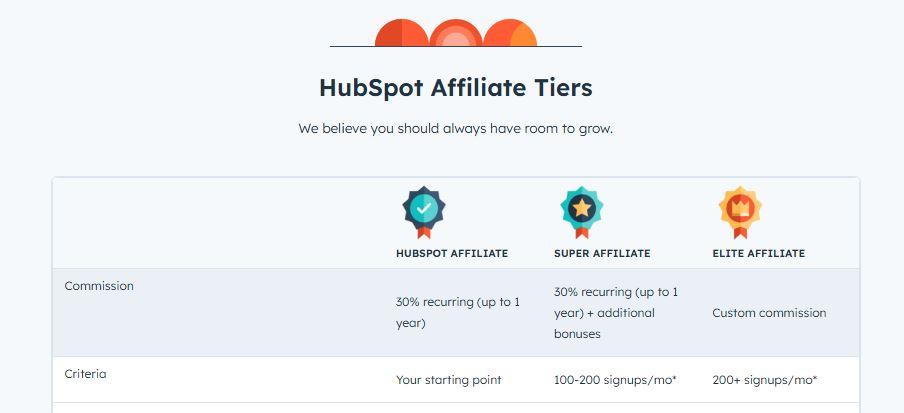Affiliate Fees 101: A Complete Guide for Beginners this 2024
- Affiliate Fees: Guide to Setting Up Your Brand’s Commission Rates
- Everything You Need to Know About Affiliate Fees to Create Your 2025 Campaign
- Demystifying Affiliate Fees: Learn How Much to Reward Your Affiliates
Setting affiliate fees can be a headache—charge too little, and affiliates won’t stick around; pay too much, and your profit will suffer. Striking the right balance is crucial across all business niches.
A well-designed fee structure motivates affiliates to deliver high-quality leads while building loyalty and trust. It also helps you craft a sustainable budget plan for a long-term affiliate marketing strategy.
In this guide, you’ll learn about some affiliate fee fundamentals that are critical to creating attractive commissions to ensure a win-win scenario for your business and affiliates.
What Are Affiliate Fees?

Source: DepositPhotos
Think of affiliate fees as the reward money you pay to affiliates who bring customers to your platform. Affiliates can be niche influencers, public figures, experts, and professionals with a large number of followers on any social media platform.
By tapping into their existing huge fanbase, you don’t need to find new customers from scratch. The affiliates’ influence in their community allows you to gain lead opportunities, which you pay them through commissions.
What Are the Different Types of Affiliate Fee Structure
Now that you know about commissions, it’s time to look at the fee structures that work well across different niches.
Here are the most attractive to affiliates:
1. Fixed-dollar Commission
As one of the easiest commission models to track, this structure is attractive for both brands and affiliates. Once you’ve decided on the specific products or services that affiliates can promote on their platforms, you can assign a fixed dollar figure as a commission for every sale made.
There’s no rule on how much fee you assign to a product, but a good rule of thumb is to check how much your competitors offer and play along that range.
2. Percentage Type
Percentage commission rates offer more flexibility, which is preferred by affiliates with high conversion rates.
Let’s say you’re offering a 10% commission for a product line, with items at price points ranging from $100 to $1,000. In this case, affiliates are free to get higher incentives by focusing their advertising effort on a $500 product ($50 commission) than those under the lower-priced categories.

Source: MyProtein
3. Revenue-based Commission
While this may take longer before affiliates get paid, it can be a more strategic fee structure for your long-term plans.
Revenue-based commission rates depend on the total volume of sales affiliates bring in for a specific duration. For example, you can set a 20% commission for affiliates who reach $20,000 in sales within 15 days.
Feel free to customize the frequency and percentages, but always remember to benchmark your figures against the market average.
4. Commission-per-click
This affiliate fee type is great for bringing in more leads without the need for instant conversion. It’s ideal for brands wanting more traffic on their site over some time. Affiliates whose major edge is their follower volume will do well in this fee structure.
5. Tiered Commissions
Tiered commission rates are more complex and great for companies with an extensive product or service selection. You can set up different tier levels, each with its corresponding commission rate.
Here’s an example:
- Tier 1: 0 to 200 leads (25% commission)
- Tier 2: 201 to 500 leads (30% commission)
- Tier 3: 500+ leads (35% commission)

Source: HubSpot
Tips for Creating Competitive Affiliate Commission Structures
While affiliate fees sound straightforward, packaging your brand’s offer requires careful planning to ensure you attract the best people to promote your brand.
Here’s how we recommend you start drafting your affiliate fee strategy:
Understand Your Customer Profile
You’ve heard this before, but it’s worth saying again – the success of any business relies heavily on customer understanding.
Your clients are the core of your product, service, and overall content creation strategy, so it only makes sense to know them well so you know what type of affiliates can build effective rapport with them.
Deloitte research even suggests that client-centric companies are 60% more profitable than those who aren’t.
Once you’ve created a clear picture of your ideal customer, it becomes easier to scout affiliates based on these key elements:
- Platforms they use
- Products they often promote
- Expertise Level
- Their own audience demographic
Calculate Your Profit Margin
Paying for affiliate fees only works long-term if it doesn’t take a chunk off your profit margin. According to AffliliateWP, the average commission fee can be anywhere between 5% and 30%, which is a really long range.
That’s because setting the right fee greatly depends on your specific business, its products, and even the people you’ll collaborate with.
Benchmark Your Fee Structure with Your Competition
Think of this as your data-gathering step, where you list the commission rates offered by your competitors to their affiliates.
Start by identifying the product set with intended commissions. How much do affiliates get? How much can you offer for similar items? How can you make your offer better?
Study Your Ideal Affiliate
Your ideal affiliates are those who help you convert, but you have to remember that it’s a two-way street. They bring clients; you process the sale. This means your site has to entice your affiliates’ leads to purchase your product.
After all, they only receive money once there’s an actual sale. As a brand owner, you should build an effective sales funnel that can help affiliates monetize their content.
Consider Add-on Incentives
Incentivizing is a huge deal in affiliate marketing, and you should consider add-on options to keep your top affiliates happy.
We recommend considering these perks when planning your fee structure:
- Recurring commissions: Reward affiliates for every repeat sale from their initial referral.
- Upfront bonuses: Give out fixed-dollar bonuses for successful affiliate membership sign-ups.
- Top-performer Bonuses: Reward your best affiliate’s hard work with extra cash.
Putting It All Into Perspective
Imagine EcoEssentials, a fictional brand selling eco-friendly home products. The company wants to tap into a dedicated affiliate base to boost sales without straining its budget.
Here’s how EcoEssentials sets up its affiliate fees:
- Affiliate research: EcoEssentials targets eco-conscious customers, so they seek affiliates who resonate with this audience. They choose people who post sustainable living content on social media and who genuinely use and endorse green products.
- Studying ideal affiliates: After they get a broad list of potential affiliates, they carefully select only those who can drive targeted traffic and boost conversion rates.
- Profit margin calculations: EcoEssentials runs a profitability analysis to ensure their fees leave enough profit. They analyze various fee models to see which is the best one for their offer.
- Benchmarking competitors: By analyzing other green brands’ fees, EcoEssentials ensures their rates are competitive without overstretching.
- Adding other incentives: EcoEssentials offers a $50 upfront bonus for affiliates who enroll five new subscribers in the subscription box to sweeten the pot even more. This motivates affiliates to generate new leads, and EcoEssentials secures repeat customers.
This way, EcoEssentials creates a sustainable affiliate program that attracts motivated partners who align with their brand’s mission.
Do’s and Don’ts in Affiliate Fee Setup
Your affiliate commissions should fall within a reasonable budget, ideally not impacting your profit margin.
Here are do’s and don’ts to remember:
DO’S
- Provide Transparent Terms & Conditions: Include structure, payment frequency, and limitations.
- Match Fee with Value: Affiliates who pull high-value customers deserve higher commissions.
- Consider Recurring Commissions: Subscription-based services can use this to motivate affiliates to continue bringing quality leads.
- Review Fee Structure: Regularly check and update fees when required to adapt to market fluctuations and competition changes.
DON’TS
- Set Unreasonable Fees: Stick to the industry average and avoid setting too high or low fees.
- Set Complicated Terms: Keep your terms straightforward and transparent.
- Skip Payouts: Always follow the payment schedules indicated in your terms & conditions.
- Exaggerate on Incentives: Be honest about what’s in it for your affiliates, and don’t advertise perks you can’t deliver.
Set up Your Affiliate Fees the Right Way
Building a competitive commission fee structure is a key component in the long-term success of your affiliate marketing strategy.
By understanding your target market and competition, you’re a step closer to creating an incentive strategy to keep your top-performing affiliates delivering quality leads.
Use these tips to set up your own affiliate fees and ensure you’re offering the right kind of rewards for your affiliates.
